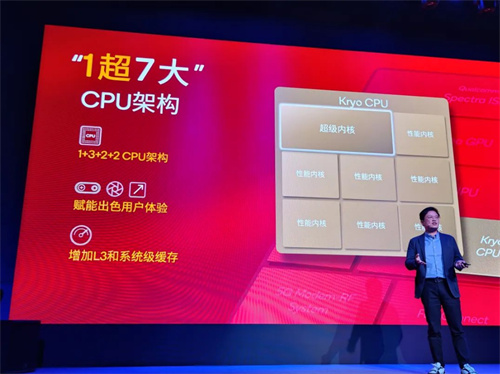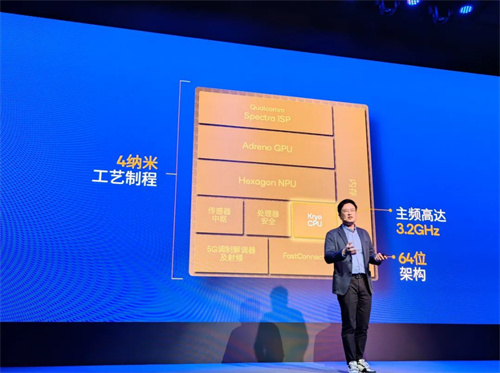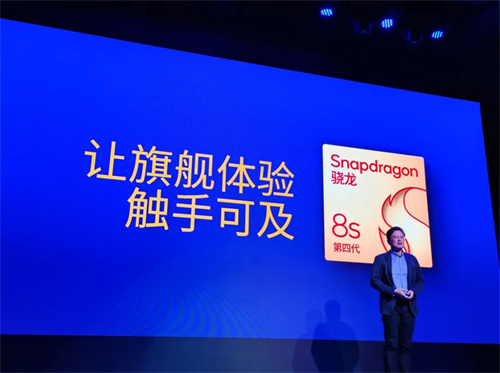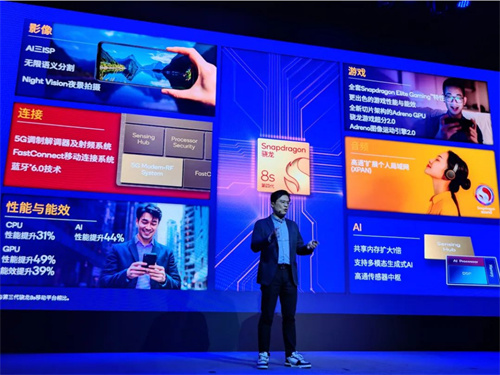The fourth generation of Snapdragon 8s is officially released. What is the real power of the "new generation" flagship?
Apr 08 2025
Abstract: Snapdragon makes the flagship experience no longer "rare".
In recent years, China's high-end mobile phone market has been growing continuously, according to Counterpoint According to a research survey, the sales share of models sold at more than US$600 has jumped from 11% in 2018 to 28% in 2024. The growth of the high-end mobile phone market is essentially a significant change in users' demand for mobile phones. More and more users’ requirements are no longer “just enough”, but rather they hope to achieve higher performance, longer battery life and better imaging performance.
At the same time, users also hope to enjoy a flagship-level experience at a more affordable price. Although it sounds a bit contradictory, it is actually not a conflict. In the past two years, many non-flagship mobile phones have already had some flagship features, providing users with a flagship-level experience in gaming, image processing, etc.

To meet the needs of users, Qualcomm officially launched the new fourth-generation Snapdragon 8s mobile platform on April 2, aiming to bring flagship-level performance and advanced features to a wider user base. According to Qualcomm, this "new generation flagship" chip is a product that is accurately optimized based on partners and market feedback. The goal is to reduce the scale of the flagship experience, help manufacturers create products that satisfy consumers, and allow more consumers to enjoy a truly flagship mobile experience in a more relaxed way.
Innovate the architecture, improve both performance and energy efficiency
Compared with the previous generation, the fourth generation Snapdragon 8s has made drastic upgrades in the CPU architecture, adopting a brand new "1" The 7-big architecture, thanks to the upgrade of the architecture, the fourth-generation Snapdragon 8s has significantly improved performance, with the CPU performance alone being increased by up to 31%.

In order to further enhance performance, Qualcomm has also added more L3 caches and system caches to the fourth-generation Snapdragon 8s, making data access between cores more efficient and perform better when handling complex operations such as AI inference. As the core of the mobile platform, the performance improvement of CPU is often directly fed back to daily use, allowing the mobile phone to provide a better experience in scenarios such as gaming, image processing, and multi-task parallelism.
The new architecture not only brings performance upgrades, but also better energy efficiency performance. Judging from the official data, the battery life of the fourth-generation Snapdragon 8s has improved in terms of gaming, calling, music playback, etc. Snapdragon proves that higher performance does not need to be achieved at the premise of sacrificing battery life, and high performance and long battery life can coexist.
Why is the high-performance structure of the "1-seven-large" CPU architecture more energy-efficient? The key to energy efficiency lies in the core regulation and architecture design. For example, the A720 performance core adopted by the fourth-generation Snapdragon 8s, Snapdragon intelligently limits the main frequency to provide performance that is no less than energy-efficient cores with lower power consumption, and can also provide additional performance through overclocking when needed.

In addition to performance, the fourth generation Snapdragon 8s also has a new generation of Qualcomm Hexagon built-in NPU, with the help of the new converged AI microarchitecture, can provide more powerful end-side AI computing power, an increase of about 44% compared with the previous generation. In actual testing, the efficiency of the fourth-generation Snapdragon 8s in tasks such as image classification, object detection and super resolution has generally increased by 25% to 55%.
In fact, AI functions have long penetrated into every corner of the mobile phone system, such as the intelligent classification of photo albums, camera object detection and AI image algorithms, and online video quality enhancement, etc. These are all functions implemented based on AI algorithms.
Therefore, AI computing power has become an important parameter for measuring chip capabilities, and Qualcomm has been spared no effort to strengthen the AI performance of Snapdragon mobile platform. Even compared with the competitor's previous flagship chips, the fourth-generation Snapdragon 8s is still 22% ahead of AI computing power, which not only allows mobile phones to provide a better experience in imaging, smart voice assistants, etc., but also supports the deployment of end-side AI models with larger parameters to meet the needs of future AI native applications.
With the dual support of architecture optimization and AI computing power, the performance of the fourth-generation Snapdragon 8s is even comparable to the third-generation Snapdragon 8, the previous generation top flagship platform. This "new generation flagship" chip allows users to enjoy an uncompromising flagship experience, and also provides new options for manufacturers to create higher cost-effective flagship devices.
Flagship-level gaming experience, within reach
Although the CPU is greatly improved, it is not the only protagonist. The GPU core of the fourth-generation Snapdragon 8s has also been fully upgraded, adopting a new slice architecture with the same design as the Snapdragon 8 Supreme Edition, making its GPU performance increase by 49% compared to the previous generation and its energy efficiency increase by 39%.
Thanks to the new architectural design, the fourth generation of Snapdragon 8s is deeply optimized for the running scenarios of modern mobile games, and efficiently parallel processing is carried out with the independent core of the shading processor, allowing the GPU to render complex 3D scenes more efficiently,The fourth generation Snapdragon 8s can provide a more stable game frame count while ensuring the finer picture quality.
In actual testing, when running competitive games such as "Honor of Kings" in the fourth generation Snapdragon 8s, they can maintain full frame operation (120fps) almost all, leading by about 6% over competitor platforms in average frame rate. In large open world 3D games such as "Genshin Impact", the fourth-generation Snapdragon 8s can not only maintain full frame operation for a long time, but also has a frame rate of 18.6% ahead of competitors, and has lower real-time power consumption.

It can be said that in response to the game needs of players at this stage, the fourth-generation Snapdragon 8s has given a good answer, but the GPU upgrade is more than that. In order to meet future gaming needs, the fourth-generation Snapdragon 8s will also fully support Snapdragon Elite Gaming feature suite, which includes a series of gaming technologies such as hardware acceleration-based real-time ray tracing, Snapdragon gaming super resolution 2.0, adaptive performance engine 3.0, and Adreno image motion engine 2.0.
Through the popularization of flagship game technology, the fourth-generation Snapdragon 8s has successfully reduced the gap between the sub-flagship platform and the top flagship at the game level, allowing players to enjoy flagship-level screen effects and smooth frame rates on devices using the fourth-generation Snapdragon 8s.

In my opinion, Snapdragon's choice is forward-looking. Mobile games that have been popular in the past two years, such as "Cangfa: Star Dome Railway", "Zero" and "Mingchao", are basically 3D games with high picture quality + fine modeling, and games like "Against the Cold" that use ray tracing image quality as the selling point. Without the support of technologies such as super resolution, performance tuning and high frame doubling, it is difficult to support it to continue to provide a stable experience in the future mobile gaming ecosystem.
At least for mobile phone users who choose the fourth generation of Snapdragon 8s, they do not need to worry too much about their phones not being able to run future mobile game masterpieces, and also give players who are eager to have a flagship gaming experience but have a limited budget.
Not only flagship performance, but also flagship ecosystem
Although many people focus on chip performance on core performance such as CPU and GPU, the advantages of flagship chips are not only on performance, but also on more important ecological support, which is something that many ordinary users often ignore. For example, the A mobile phone of the same brand and the B mobile phone use the same image sensor, but in actual shooting, the A mobile phone performs better, and some people are puzzled by this.
In fact, the reason is very simple. The chip platform used by A phone supports higher-spec image algorithms and more mature tuning solutions, so it can provide a better shooting experience. Considering that images are the core function that mobile phone users pay great attention to, the fourth-generation Snapdragon 8s is also directly aligned with the top flagship platforms, using the same 18-bit as the Snapdragon 8 Supreme Edition. AI three ISP architecture ensures that the phone can take amazing photos and videos in different scenes.

AI imaging algorithms have become the core of mobile phone images. For users, mobile phone imaging performance not only depends on sensor parameters, but also on the image support of the chip platform. Without the support of the infrastructure, no matter how good the sensor is, it cannot output satisfactory photos.
Therefore, the fourth generation of Snapdragon 8s also introduced AI infinite semantic segmentation technology, allowing mobile phones to recognize almost all elements such as faces, hair, clothes, backgrounds, etc. in the picture in real time and optimize them in real time, making shooting more worry-free. At the same time, Snapdragon has also enhanced the fourth generation Snapdragon 8s night view algorithm, and added new support for Night Vision 2.0 has popularized high-quality 4K night view video functions to mid-to-high-end and sub-flagship product lines, and has further optimized the current vlog shooting needs.
With the support of flagship imaging systems, the fourth-generation Snapdragon 8s undoubtedly has imaging potential comparable to flagship phones. For users who focus on image experience, even lower-positioned mobile phones can get better image support and can also enjoy a master-level image experience.
In addition to the image, Snapdragon also further pays attention to users' demand for wireless audio. Wireless headphones have become a must-have for most people's daily commute and travel, and the requirements for sound quality and noise reduction functions have also risen. To provide a better experience, the fourth generation of Snapdragon 8s supports the new generation of Snapdragon Sound Snapdragon listening technology provides more optimizations for connections in Bluetooth mode, allowing wireless headphones to have higher stability in complex environments such as subways and supports higher sound quality.
In addition, Snapdragon also introduced Qualcomm XPAN to the fourth-generation Snapdragon 8s mobile platform for the first time, expanding the personal LAN technology, which can extend the connection range of Bluetooth devices with the help of Wi-Fi and provide lower latency and better sound quality with the help of Wi-Fi network. The first product to support this technology is the Buds released by Xiaomi. 5 Pro (Wi-Fi version),�Let the flagship wireless headphone ecosystem expand to more fields.
At the same time, the fourth generation Snapdragon 8s has further optimized Snapdragon Seamless seamless connection technology, smart interconnection systems are no longer exclusive to flagship phones. With this technology, mid-to-high-end and sub-flagship mobile phones can also experience the new generation of cross-device collaboration functions. With tablets and headphones of the same ecosystem, you can enjoy various functions such as seamless audio switching, cross-screen operation and sensorless file transfer.

On this basis, in order to provide users with a better connection experience, the fourth-generation Snapdragon 8s has also upgraded the latest 5G modem and RF system. Combined with the 5G ultra-low latency package and the third-generation intelligent network selection technology, it can maintain high-speed and stable mobile network connection even in complex environments such as high-speed rail, subway, and elevators.
It will also support the new generation of Wi-Fi 7 standards. Compared with the current mainstream Wi-Fi 6, Wi-Fi 7 has higher bandwidth and much stronger link concurrency, allowing the phone to get lower latency and higher network speed in Wi-Fi mode, meeting the needs of cross-end collaboration, ultra-large file transmission and 8K video.
I have to say that the fourth-generation Snapdragon 8s gave me a lot of surprises in terms of intelligent ecological support. Snapdragon basically popularized the characteristics of most flagship platforms into the new generation of flagship platforms, allowing the fourth-generation Snapdragon 8s to have stronger competitiveness in the future sub-flagship market, and at the same time allowing more users to enjoy the real flagship functions.
XiaoDragon: Give users more choices
In my opinion, the launch of the fourth-generation Snapdragon 8s marks the further popularization of flagship technology. With all-round upgrades, it can help manufacturers create more diverse products to meet the segmented needs of different user groups, allowing mobile phone manufacturers to create more suitable models outside of top flagships, and provide new choices for more users who want to experience the characteristics of flagships.
At present, the fourth-generation Snapdragon 8s has received support from multiple manufacturers. REDMI, iQOO, Xiaomi, OPPO, Xingji Meizu and other brands have related products to be released soon. The starting lineup is quite strong, which indirectly shows that mobile phone manufacturers are full of confidence in the performance of this chip.
The upcoming series of fourth-generation Snapdragon 8s terminals give users more choices, and these new phones with fully improved experiences will greatly reduce the entry threshold for flagship experience. As Qualcomm emphasized, the launch of this platform will further push the flagship experience downward, allowing more consumers to truly enjoy the flagship mobile experience.





